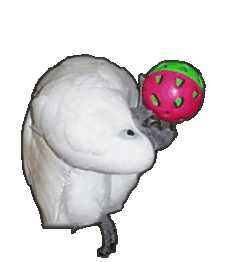Published Feb 22, 2008
In the very back of my house, above the closet in my office, I have a rather deep shelf with a narrow sliding door. Over the years, I’ve managed to fill this shelf with one forgotten thing after another; naturally, the stuff that I wanted to keep all ended up sitting on the floor or in other temporary locations. But, with a 3-day weekend under my belt, I actually cleaned out the shelf. Oh, the crap that I threw away. But some of it: not so bad. Like, for instance, this:

That’s the camera I had in high school, the Canon EOS Rebel S, a very early entry-level EOS body. It was actually tucked away in a very old camera bag, hidden beneath a old and exceedingly mediocre digital camera that I had inherited back in ‘99 and whose breathtaking lack of features and poor resolution contributed materially to my decision to give up photography as a hobby.1
In today’s market, the Rebel S body is almost stunning for how simple it is — in fact, I think it has about the smallest number of doo-dads that you can put in an SLR and have any advantage over a point-and-shoot. There’s no drive selection2, only the one metering mode,3 no multi-point autofocus selection (it only focuses on vertical lines! how quaint!) — just full-manual, aperture priority, shutter priority, and full-auto. Oh, sure, there are programmed modes, but who uses those? I guess they were an innovative idea when the camera came out, even if those same modes do now exist on every entry-level point-and-shoot.
The non-simple thing about the camera is figuring out if it works. With a digital camera, you take it out, see if it turns on, if not, put in a new battery, take a photo, and it works or not. With a film camera — well, I’ll tell you if it works when I get the film developed. But it did need a new battery. Still, it’s a good sign that everything worked once I put said battery in.
By a stunning coincidence — and totally without any planning4 — this body is actually compatible with the same lenses I have for my digital SLR, an EOS Rebel XTi. Which means I now have a film body! Which perhaps means that I can take all that film I bought for my sadly-stolen Minolta system out of the butter shelf in my fridge, shoot it, and put my butter back where it belongs.
And that’s how you, too, can clean out your fridge by cleaning out your back shelf.
1 In all fairness, I must give plenty of credit to Sheila Pinkel for this as well.
2 That is, how many frames the camera shoots every time you click the button.
3 What method the camera uses to figure out how bright the photo you’re trying to take is, and therefore what the exposure it suggests to you should be — does the camera measure only the item you’re focusing on? Some subset of items that appear to be highlights? Take an average of the whole scene? On my DSLR, I can choose.
4 Technically there may have been a bit of reverse planning. I got used to the Canon interface on my EOS Rebel in high school and a bit in college. The later Minolta bodies I used were an easy switch for me because (from what I have read), back in the late ’60s, Minolta ripped off Canon’s interface; while the two have diverged since then, the philosophy remains the same. So, it’s much easier for me to go back and forth between Minoltas and Canons than it is for me to use totally unfamiliar Nikons and Canons.

And thatís how you, too, can clean out your fridge by cleaning out your back shelf.
Alternately, you could move, which requires cleaning both and tossing out stuff that’s fossilized in either location… Though in that case, correlation does not imply causation.
I don’t know, I think your moving tale of woe has got me rooted to this place for at least another six months.
Aside from the fact that moving is a morbid undertaking, I think (for whatever my two cents is worth) that you’re right to stay in your place for at least six months: Your back door works, parking IS looking up - or will the addition of my five iron, summer’s around the corner and you’ve got your great back-yard setup, and the price is certainly right. Plus, it doesn’t make sense to uproot yourself until all gold-fish quality control and similar issues are well in hand. All well worth the months-long wait.
After this morning’s catastrophe, I’ve decided to embrace Bing Crosby’s philosophy and “accentuate the positive//eliminate the negative..”
Yes, I’m not sure that either of us is allowed to move into a nicer place until we’ve proven we won’t burn it down or something!
That was a spooky dream, tho. I could totally feel the pouch with my Dine to Thrive meal in it wiggle as the goldfish swam around! What a bizarre dream, huh? At least I can be sure that we will never have that particular quality control problem.